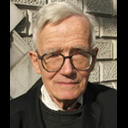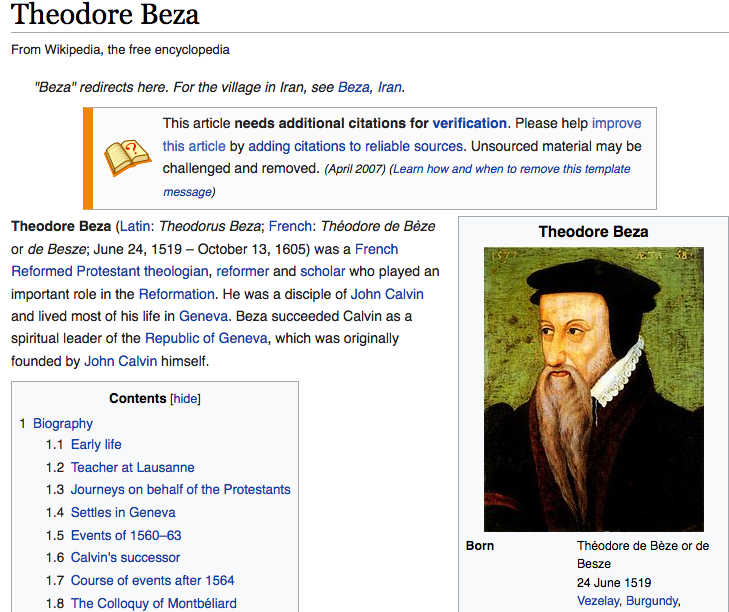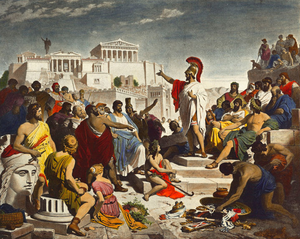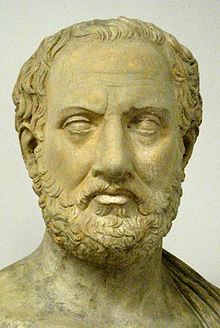It is Sunday morning and I beg to be allowed a lazy post for once. Let me copy here a comment I left on PZ’s site and that I originally made in reply to a visitor to Vridar.
Someone on my blog asked a vital question. . . . The question (after addressing the legends about Davy Crockett)
Perhaps the question we should be asking about Jesus, is not if the surviving texts about him are purely mythical or if they represent the honest to god unquestionable truth, but if they are hagiography and whitewashing, and if anything historical can be extracted from them.
That’s an excellent question and one I have written about many times here, often discussing the works of classicists and ancient historians as they themselves inform us how they address that type of question. The second post in this series contains links to some of those posts: https://vridar.org/2018/09/06/how-do-historians-decide-who-was-historical-who-fictional/
Some of those articles:
— As for figures about whom we have contradictory records, such as Socrates, we have seen whether and on what grounds his status is determined in Here’s How Philosophers Know Socrates Existed.
— As for the status of mythical persons such as Gyges we have seen How a Fairy Tale King Became Historical. (In this case the myth is determined to have a historical core.)
— As for reports of miracles, we see how historians work with the evidence in Even a Bayesian Historian Can Slip Up! (once).
— On vague rumours, such as stories about the Celts ritually killing their kings, we have considered how historians work at Doing History: Did Celts Ritually Kill Their Kings?
— When it comes to fictional accounts of something like the Exodus we have critically reviewed one work at Can we extract history from fiction?
— Or when our only written reports are by enemies, we have seen a historian at work in Doing History: How Do We Know Queen Boadicea/Boudicca Existed?
We have also looked at general comments about methods by the renowned ancient historian M.I. Finley in An Ancient Historian on Historical Jesus Studies, — and on Ancient Sources Generally
But to answer your question directly:
Many ancient historical figures are said by ancient sources to have become gods or were sons of gods, and to have performed miracles, and to have done things that were very like what the myths said gods had once done. How do we know they were real?
Example: emperors became gods at death, some were said to be gods with divine ancestry while on earth, one Roman emperor healed a blind man in a manner that strikingly resembles a healing by Jesus; Hadrian dressed and acted like Hercules, Alexander the Great followed in the footsteps of Dionysus in conquering the east, etc.
But in every single case of those historians deem to be historical we have evidence that exists about those persons independently of the myths and legends surrounding them. Further, we can trace the origins and reasons for those myths by comparing them with what we know independently of the real historical figure.
The ancient authors whom we rely upon know they are writing about historical figures and their works are indeed forms of ancient history or biography. Those authors do know the difference between normal human characteristics and those of the gods and myths, and when they tell us about the mythical tales or comparisons associated with their historical subjects they nearly always either give their sources for the information or express some sympathy with their readers who may be reluctant to believe the tales. In other words, they do not tell the stories as tall tales because they want to inspire credibility in their accounts.
On the other hand we have other stories about ancient persons (some of these tales actually include genuine historical characters as part of the plot) that are told for entertainment or to convey moral or philosophical lessons and historians always call the main characters of these stories fictional. They do so because they are told just like the novellas or short stories of the day: none of the cautions and trappings of reliability of account as for the historical persons are to be found in these narratives. They are told as if the reader is expected to suspend all critical imagination and just accept or even believe their stories of miracles and nymphs and talking with gods, etc.
If we strip away the mythical trappings of Alexander and Plato and Pythagoras and Davy Crockett, we still find a real person there.
If we strip away the mythical trappings of stories of Achilles and Adam and Jesus we are left with no body to examine at all.
You might also like to consider the following posts addressing the methods of ancient historians:
Can we extract history from fiction?
and The Bible: History or Story?
See also How a Historian Establishes “What Happened” when “we only have the words of the text”







